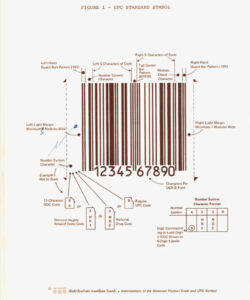In 1989, artist and poet John Giorno inscribed a sentence in capital letters that continues to ring out with guttural honesty and controlled fury: I DON’T NEED IT I DON’T WANT IT AND YOU CHEATED ME OUT OF IT. This declarative sculpture-text work, now presented courtesy of Thomas Brambilla Gallery (Bergamo) and Giorno Poetry Systems (New York), is not just a phrase. It’s an emotional waveform frozen in typeface—part protest, part confession, and wholly unapologetic. As with much of Giorno’s visual poetry, this piece refuses to whisper. It confronts. It accuses. It mourns. And ultimately, it liberates.
John Giorno was always more than a poet. Emerging from the downtown New York avant-garde in the 1960s, he collapsed the divisions between poetry, activism, and visual art. A contemporary and intimate of Warhol, Burroughs, and Ginsberg, Giorno’s creative arsenal was defined by its multiplicity: cut-up techniques, performance, installations, recordings, and eventually, wall-mounted text pieces. In I DON’T NEED IT…, we find one of his clearest and most visceral distillations of an emotional state transcribed into the visual realm.
Set in block capitals, the work performs like a billboard or a personal ultimatum screamed across a room. The text appears in a sans-serif font—clean, industrial, and deliberately stark. There is no warmth in its typography, no softness in its presentation. Instead, the message unfolds with the rage of betrayal and the cool finality of a legal statement. The tension here is in the control. The phrase could be chaotic. Instead, Giorno imposes order, grid, and discipline on emotion—transforming personal turmoil into public art.
There is a triple movement embedded in the line: rejection (I don’t need it), refusal (I don’t want it), and accusation (you cheated me out of it). Each clause builds upon the last, forming a rhythmic crescendo that lands like a punch. The phrase could belong to a spurned lover, a disillusioned artist, a failed business partner, or a betrayed citizen. It is both highly specific and radically open. In this, Giorno touches on the universal vocabulary of loss—not the sad, melancholic kind, but the sharp, explosive kind that lingers like smoke after fire.
The year 1989 is no small detail. Giorno, by then, had lived through the peak of the AIDS crisis, the height of Reagan-era neoliberalism, and the dissipation of many revolutionary ideals that once defined the 1960s counterculture. There is an undertone of political exhaustion in this work. It reads as a farewell to illusions, to institutions, to promises made and broken. Yet, it is also a reclamation of voice. Refusing what was denied becomes a form of empowerment.
This piece exists at the confluence of text art and confessional poetry. One can trace its visual lineage back to Jenny Holzer’s truisms or Barbara Kruger’s declarative collages, while its poetic DNA links it to Allen Ginsberg’s incantatory prose and the bluntness of punk lyricism. But Giorno’s genius lies in neither mimicking nor diluting these references—he condenses them into something raw and immediate. There is no decoration here. No metaphor. Just the direct force of experience made permanent.
Installed in a gallery space, the work takes on a new intensity. Viewers are no longer just readers; they become witnesses. The text confronts them from the wall, implicating everyone who walks by. It resists being treated as a passive object. It speaks aloud—even in silence. It creates a psychic reverberation, forcing the viewer to consider: What was taken from me? Who has wronged me? What truth am I still afraid to admit?
And yet, despite its confrontational nature, there is something almost sacred about the piece. It functions like a mantra—an angry prayer repeated not for forgiveness, but for release. The act of declaring “I DON’T NEED IT I DON’T WANT IT” becomes a severing. The final clause, “AND YOU CHEATED ME OUT OF IT,” transforms the speaker into both victim and victor. They have named the loss and, in doing so, reclaimed control.
The context of Giorno’s broader work adds further texture. As the founder of Giorno Poetry Systems, he sought to break down the elitism of poetry by bringing it into people’s homes through recordings, phone lines (Dial-a-Poem), and public performances. His wall-text works were a continuation of this mission—to democratize language, to rip emotion from the page and staple it to architecture, to make poetry visible and visceral.
Today, in an era of constant digital outrage, curated vulnerability, and hyper-legibility of self, Giorno’s 1989 piece feels eerily prophetic. We live in a time where emotional declarations are flattened into tweets, where betrayal is aestheticized, and where the line between truth and performance blurs. And yet, I DON’T NEED IT I DON’T WANT IT AND YOU CHEATED ME OUT OF IT doesn’t feel performative. It feels lived. It is not the cry of someone seeking attention—it is the voice of someone who has seen too much, survived too much, and has nothing left to lose.
This work is both a rupture and a relic. A rupture from silence. A relic of a time when poetry was protest, and protest was art. Through it, Giorno reminds us that honesty—especially when it hurts—is itself a form of resistance.
No comments yet.








